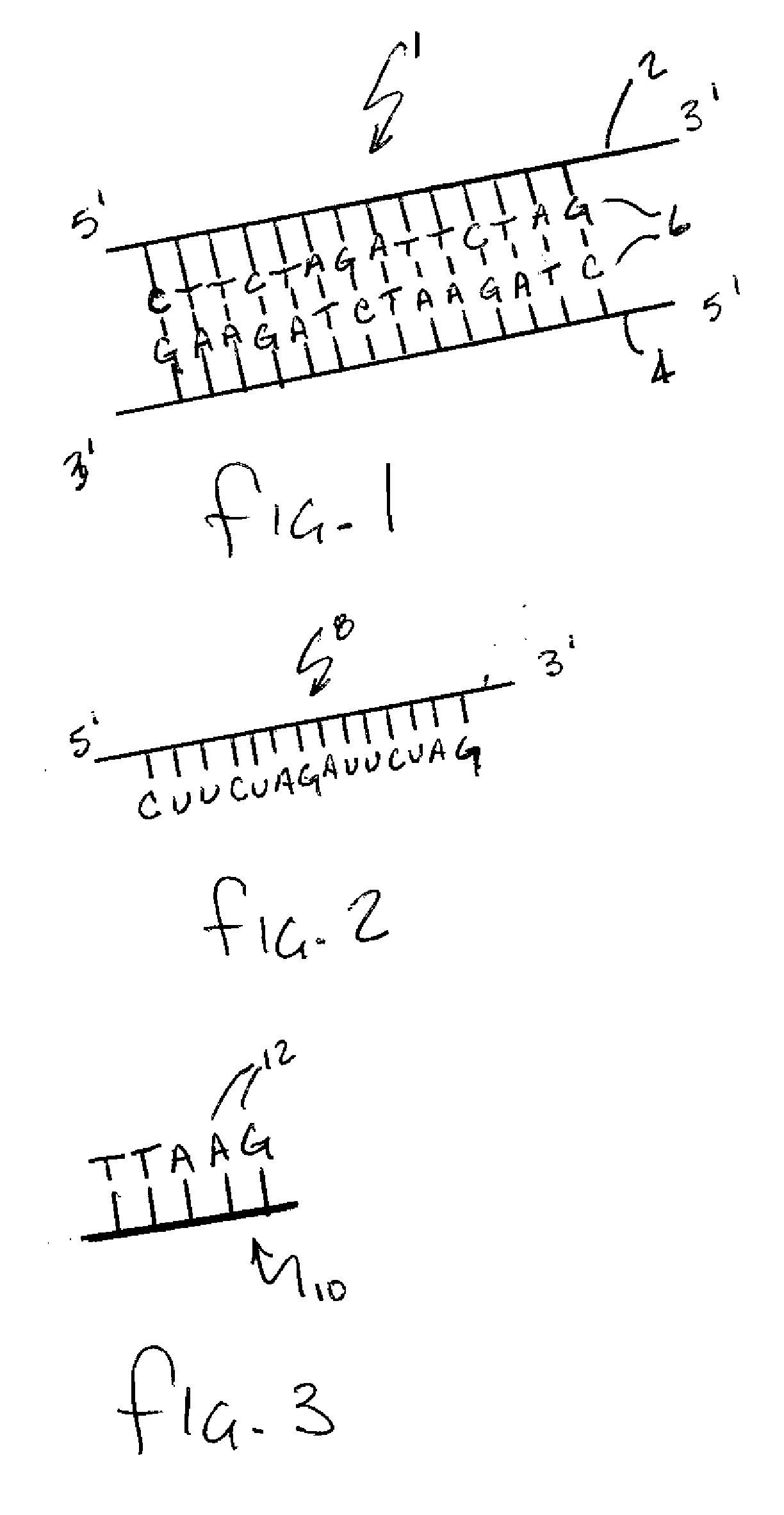Hybridization assisted nanopore sequencing
a nanopore and hybridization technology, applied in the field of detecting, sequencing and characterizing biomolecules, can solve the problems of limiting the potential of sequencing operations, wasting 3 billion dollars, and wasting time and money, and achieve the effect of eliminating the need for time-consuming and costly preparation
- Summary
- Abstract
- Description
- Claims
- Application Information
AI Technical Summary
Benefits of technology
Problems solved by technology
Method used
Image
Examples
Embodiment Construction
[0030] As stated above, the present invention is directed to a method of sequencing and mapping strands of organic biomolecules. In the context of the present invention the term biomolecule is intended to include any known form of biomolecule including but not limited to for example DNA, RNA (in any form) and proteins. In basic terms, DNA is the fundamental molecule containing all of the genomic information required in living processes. RNA molecules are formed as complementary copies of DNA strands in a process called transcription. Proteins are then formed from amino acids based on the RNA patterns in a process called translation. The common relation that can be found in each of these molecules is that they are all constructed using a small group of building blocks or bases that are strung together in various sequences based on the end purpose that the resulting biomolecule will ultimately serve.
[0031] Turning to FIG. 1, a DNA molecule 1 is schematically depicted and can be seen ...
PUM
| Property | Measurement | Unit |
|---|---|---|
| Diameter | aaaaa | aaaaa |
| Diameter | aaaaa | aaaaa |
| Temperature | aaaaa | aaaaa |
Abstract
Description
Claims
Application Information
 Login to View More
Login to View More - R&D
- Intellectual Property
- Life Sciences
- Materials
- Tech Scout
- Unparalleled Data Quality
- Higher Quality Content
- 60% Fewer Hallucinations
Browse by: Latest US Patents, China's latest patents, Technical Efficacy Thesaurus, Application Domain, Technology Topic, Popular Technical Reports.
© 2025 PatSnap. All rights reserved.Legal|Privacy policy|Modern Slavery Act Transparency Statement|Sitemap|About US| Contact US: help@patsnap.com



